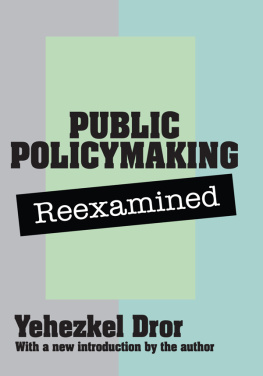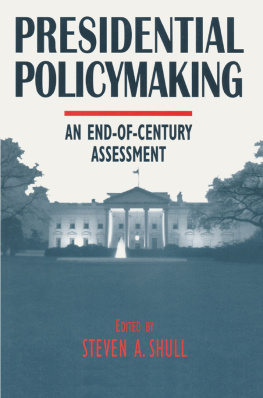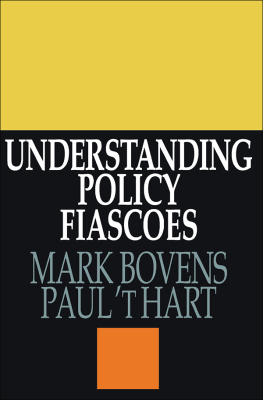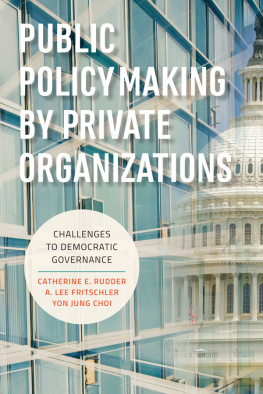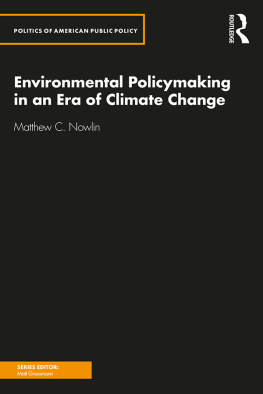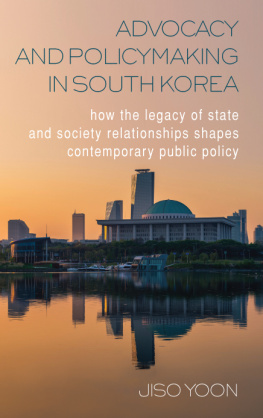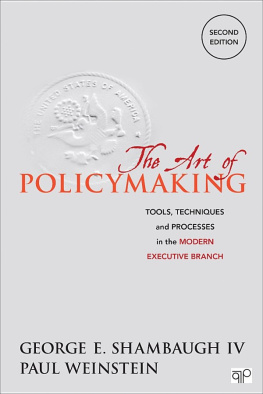POLICYMAKING UNDER ADVERSITY
POLICYMAKING UNDER ADVERSITY
YEHEZKEL DROR
First published 1986 by Transaction Publishers
First paperback edition 1988
Published 2017 by Routledge
2 Park Square, Milton Park, Abingdon, Oxon OX14 4RN
711 Third Avenue, New York, NY 10017, USA
Routledge is an imprint of the Taylor & Francis Group, an informa business
Copyright 1986 Transaction Publishers
All rights reserved. No part of this book may be reprinted or reproduced or utilised in any form or by any electronic, mechanical, or other means, now known or hereafter invented, including photocopying and recording, or in any information storage or retrieval system, without permission in writing from the publishers.
Notice:
Product or corporate names may be trademarks or registered trademarks, and are used only for identification and explanation without intent to infringe.
Library of Congress Catalog Number: 84-24119
Library of Congress Cataloging in Publication Data
Dror, Yehezkel, 1928
Policymaking under adversity.
Bibliography: p.
Includes indexes.
1. Policy sciences. I. Title.
H97.D758 1986 361.6'1 84-24119
ISBN 0-88738-721-7
ISBN 13: 978-0-88738-721-0 (pbk)
To Bracha and Zvi Elboim,
my unusual parents-in-law
Contents
This book deals with the theory and practice of policymaking under adversity, with some historic inputs and a forward look. Focusing on what I propose to call metaphorically maze policy-behavior, and applying my general policy sciences approaches to conditions of adversity, I make an effort to advance general theory, on one hand, and to design applicable improvement approaches, on the other hand. Thus, this book is quite different in focus from my recently republished Public Policymaking Reexamined (Transaction, 1983), as supplemented with a new introduction.
I continue working on a third volume, titled Policy-Gambling, which develops a theory of policymaking as coping with uncertainty and ignorance. Each one of the trilogy volumes adopts a different perspective and stands by itself. It is my hope that when the trilogy is finished, it will add up to a comprehensive and multidimensional treatise on policymaking theory, reality, and improvement as a main part of a general theory of societal command and control.
This book could not have been written without a three-year research leave granted to me by the Hebrew University of Jerusalem. For this I am grateful to my colleagues at the Department of Political Science, who willingly accepted additional burdens to enable me to engage in my studies.
I am also deeply indebted to a number of institutions and their devoted staffs, who supported and aided this study, as well as to senior policymakers in many countries, including my own, who made me a partner to their Herculean labor and endless adventure (Oliver 1931). In particular, I would like to thank the Samuel Neaman Institute for Advanced Studies in Science and Technology, TechnionIsrael Institute of Technology, Haifa, for sponsoring a study on the improvements of policymaking in Israel, which I headed; the United Nations Development Program, for opportunities to work on policymaking problems in some Third World countries, broadening my perspectives and providing some tough pilot-testing of ideas; and the Technical Co-operation Service of the Organization for Economic Co-operation and Development (OECD), for outstanding insights deep into governance.
Different, but not smaller, is my gratitude to the Woodrow Wilson International Center for Scholars, Washington, DC, and the Science Center Berlin for providing very stimulating environments. Special appreciation is due to the Institute for Advanced Study Berlin and the Russell Sage Foundation, New York, where this book slowly took shape.
Last, but not least, let me thank Transaction, Inc., and especially its president Irving Louis Horowitz and his colleagues, for willingly undertaking and carefully implementing a double publication venture.
One feature of this book that needs some explanation is the extensive, though incomplete, list of mainly recent references integrated into the text. These references are provided neither as scholastic support for propositions nor to demonstrate erudition. Their purpose is to help readers to look into subjects that they find interesting. Bibliographic aid is all the more necessary because of the breadth of multidisciplinary literature salient to the study of public policymaking, combined with lack of suitable comprehensive annotated bibliographies (as provided by D.E. Wilson 1979 for parts of the subject. Invaluable and amazingly underutilized are the Future Survey monthly and annuals edited by Michael Marien; see Marien 1980; Marien 1982; Marien 1983. Nagel 1983b is an important literature guide to policy studies as is Robey 1984).
Rather than prepare a bibliographic essay, as in other books of mine, I share with readers, in the form of references in the text, some of the fruits of an extensive literature examination that consumed large parts of the three-year research leave. At the very least, this may save the time and effort of colleagues and students. Some German literature that has no equivalents I know of in English and single essential items in French are also included. The policy of this book not to belabor subjects adequately covered in the literature and to refer to them only succinctly makes extensive references to the relied-upon writings all the more necessary.
The study of policymaking being an endless venture, not less so than the practice of policymaking, comments, suggestions, and enlightenments by readers are solicited. These can be of much help to the author in his continuous concerns with the problematics of governance. All inputs will be appreciated.
Leitmotif
The overall problematics at which this book is directed is well put by a simile used by a historian in evaluating belated Roman response to financial crisis (MacMullen 1976, 116): Government reacted like a frightened child at the controls of a runaway express train, pushing all sorts of levers and knobs.
The main questions to be probed in this book are whether and when such a simile presents a correct picture of policymaking, perhaps now with a jet plane, loaded with nuclear bombs, to be substituted for express train; what are the main features and causes of such maze policy-behavior; what can be done to improve it; and what consequences are to be expected from it.
Moving from pictorial images to the book as a scientific and professional endeavor, one needs to explore its scope, concepts, and methods somewhat before moving into the matter itself.
Need for Theoretic Perspective
Policy sciences (a concept I write in the plural, to recognize multiple contents, but treat grammatically in the singular, to underline basic unity) continues to lack adequate concept packages and significant theoretic conjectures. Although this book does not presume to arrive at an integrated general theory of policymaking, nevertheless an effort is made to put dispersed and disparate findings and ideas into a meaningful theoretic framework and to revise some widely accepted premises, with the help of adversity used both as a theoretic construct and as a pervasive feature of policymaking realities.
Most of the book looks at adversity as facing policymaking at present and in the foreseeable future. But this is only one situation out of a larger set, even if one of particular concern at present. Adversity in different forms has conditioned policymaking in nearly all historic situations and will do so in the future. Therefore, examination of policymaking as shaped by adversity and as trying to face up to adversity exposes universal characteristics of policymaking.


